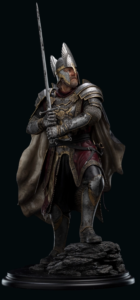Middle-earth March Madness 2023, Rings of Power Edition begins today. Staffer Garfeimao has taken a closer look at the 64 competitors in this year’s bracket, to help you as you make your choices. Take a look at what she has to say; and then head on over to the March Madness launch to vote in Round One!
Continue reading “Vote now in Middle-earth March Madness 2023: a closer look at the bracket”Tag: numenor
It is the start of Spring in the Northern Hemisphere; which means it’s time for March Madness! This year, TheOneRing.net brings you Middle-earth March Madness 2023, Rings of Power Edition.
Looking back on Season One of the Prime Video show – and pondering what may be in store in Season Two – our 64 competitors are all characters from The Lord of the Rings: The Rings of Power. Who was your favourite amongst the Harfoots (‘Harfeet!’)? Who would win in a showdown between Prince Durin and his father? Will Elendil eventually go up against his own son? YOU decide!
How you decide, of course, is up to you. You may choose to revisit the show on Prime Video and refresh your memory of the plot lines. Perhaps your vote is based on which actors you most enjoyed in their roles; or perhaps you’ll vote according to the characters you felt remained closest to how they appear in the pages of Tolkien’s books. Or maybe you’ll just toss a coin! It’s up to you; but however you decide, now is the time to place your votes!
How does it work, you ask? Simple! Click on one of the orange division buttons below. Then click the ‘Vote Now’ option that appears above the divisional bracket. This year you get to vote in each divisional match-up in one convenient and visual interface. Note – you need to click each division to vote in their respective brackets. So let’s get voting!
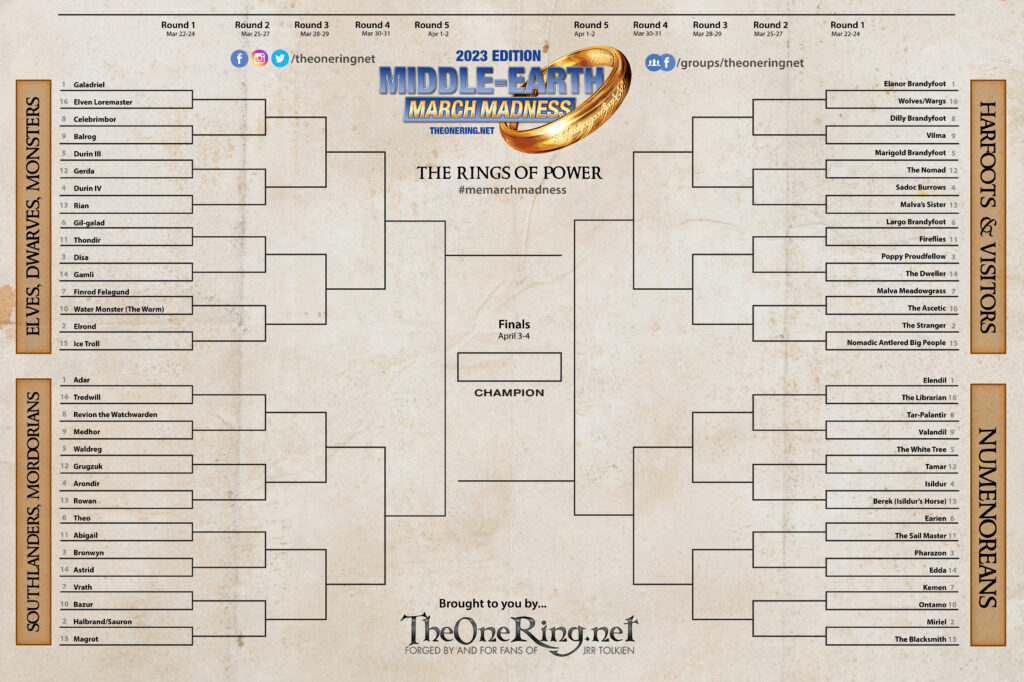
You have until the end of the day Friday March 24th to vote in Round One; on Saturday 25th we’ll announce winners and open voting for Round Two! Let the games begin!
From the art of The Vatican to Lawrence of Arabia.
The showrunners of The Lord of the Rings: The Rings of Power are bringing us back to Middle-earth. Now, with the entire season now out showrunners J.D. Payne and Patrick McKay have been sharing influences and the creative process behind their most-beloved and most-challenging aspects of the show.
From many interviews across the web, here are some of those in their own words.
On Building Relationships
“From the beginning we wanted to build a relationship between Sauron and Galadriel.” – J.D. Payne, Co-Showrunner
“I hope after the last episode airs, viewers watch the whole season again, which is now a different experience… We were concerned about a situation where the part of the audience steeped in lore is six or seven episodes ahead of the characters. If deception is an important part of the journey, we wanted to preserve that experience for book readers too.”
Patrick McKay, Co-Showrunner
“Season one opens with: Who is Galadriel? Where did she come from? What did she suffer? Why is she driven?” says Payne. “We’re doing the same thing with Sauron in season two. We’ll fill in all the missing pieces. Sauron can now just be Sauron, like Tony Soprano or Walter White. He’s evil, but complexly evil. “
Patrick McKay, Co-Showrunner
Galadriel’s in this place of betrayal and anger and mad at herself and at him, and Sauron’s really coming from this place of, “No, no, no, no, no. This is good. It’s all been leading up to this. This is what we’ve been doing all season. By combining our powers, look at what we’ve achieved. We could do so much more together.”
Gennifer Hutchinson, co-writer Episode 2 & 8
Halbrand’s first lines to Galadriel on the raft are: “‘The tides of fate are flowing. Yours may be heading out.’ That’s the same line that Galadriel says to Frodo when the ring comes into her orbit in LOTR. She’s repeating the first thing Sauron ever said to her.” – J.D. Payne to Vanity Fair
Introducing Sauron
“We began filming before telling Charlie Vickers he was Sauron. After filming episode two, we talked to Charlie during the pause we took because of COVID, and then episodes three through eight he was fully aware.” – J.D. Payne to Vulture
“It’s not an option calling him Annatar because the audience would know ahead of the character.” – McKay on The Ringer podcast. McKay also admits the clues are all there from the start, “in his very first shot, he’s looking over his shoulder with one eye. His second line is ‘Looks can be deceiving.'”
Vulture asked: “Why introduce Sauron through the form of this human disguise?“
Patrick McKay responded: ‘One of the earliest ideas we had for the storyline came from the moment in The Fellowship of the Ring when Galadriel is tempted by Frodo’s offer of the Ring. She talks about how well she knows and understands Sauron, and there’s a quote where she says, “I know his mind, and he gropes ever to know mine, but still the door is shut.” She clearly has a darkness — that turning down the Ring is a test she feels she has to pass to finally go West — and that the darkness in her is linked with her feelings about Sauron.’
“We wanted to do an origin story for Sauron. We didn’t want to make a show that was about the hunt for Sauron, but we love the idea of Sauron as a deceiver who could, hopefully, deceive some of the audience.”
Patrick McKay
Seems that the showrunners were trying to pull off a mic-drop moment only the greatest directors have ever successfully done, per this Empire magazine question from Patrick to James Cameron:
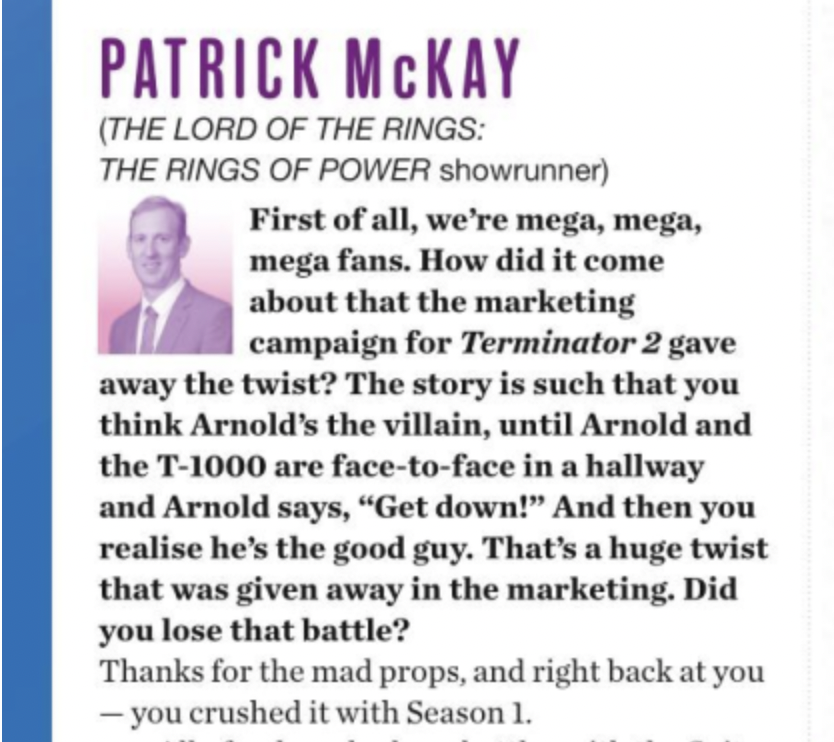
We tried to set it up where every single line would be true to a certain extent, no matter who he is.
Patrick Mckay
On Inspirations That Few Viewers Spotted
Patrick tells The Ringer podcast that the entire concept of Galadriel and Halbrand meeting at sea is based on the Neo-classical Romanticist painting “The Raft of Medusa” which hangs in the Louvre, and is surprised nobody picked up on the connection. The painting depicts the real life story of an actual boat named the Medusa that crashed at sea and led to cannibalism among the survivors on the raft.
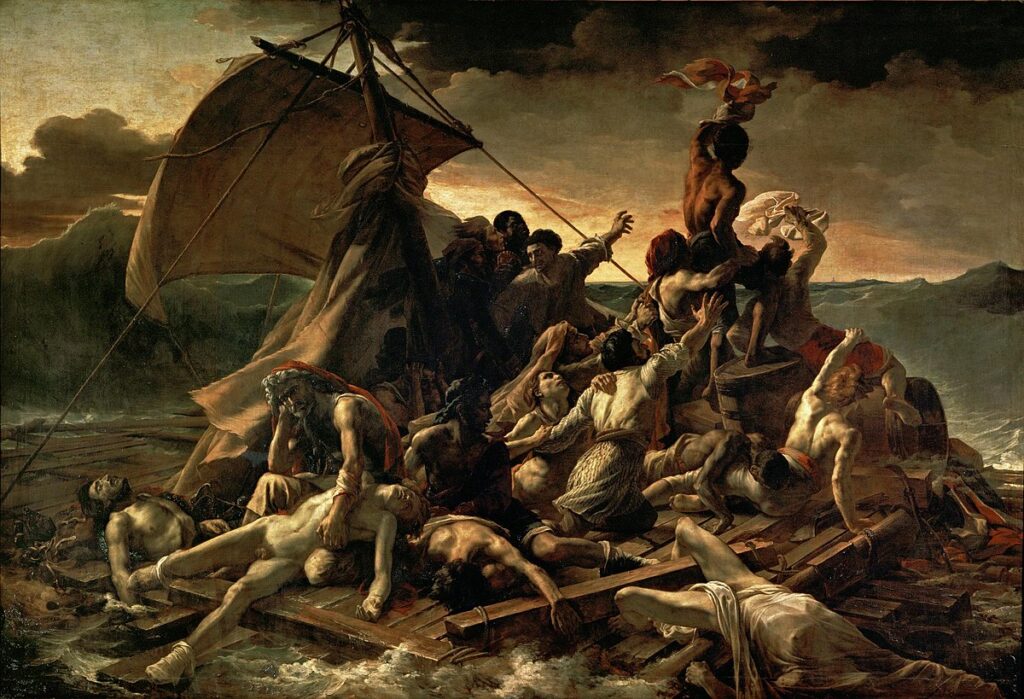
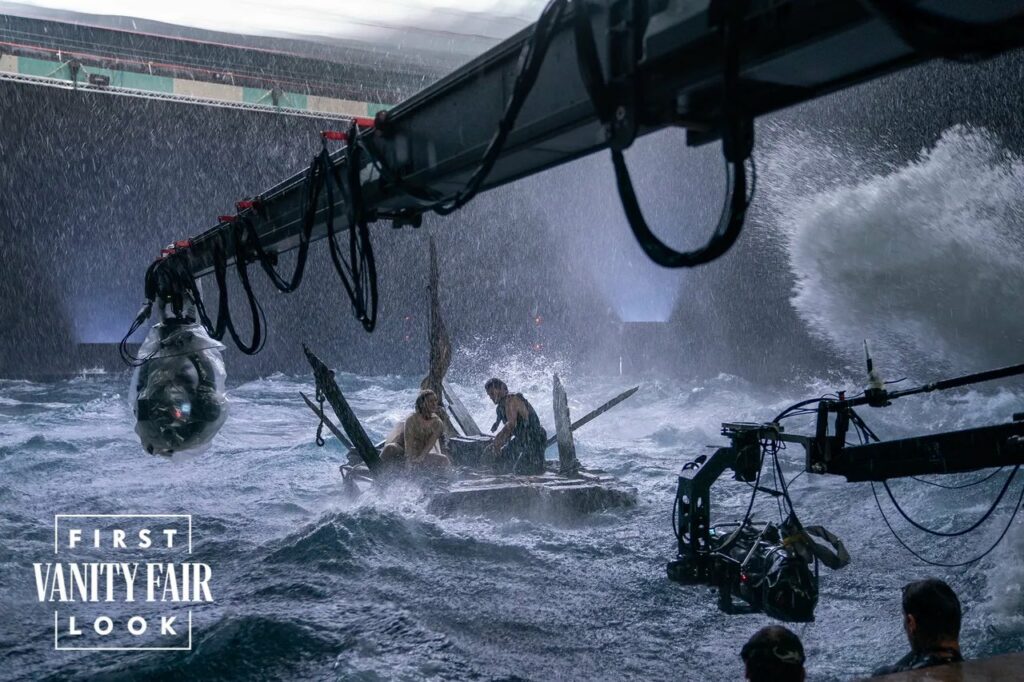
“There’s something that Milton does in Paradise Lost where he makes Satan a really compelling character. In some ways, he’s the first antihero… and you (the reader) are unconsciously won over, so that you perceive your own fallenness and your need for redemption.” – Patrick McKay
“For my final audition, I had to do a speech from Paradise Lost. Literally, as Satan.” – Charlie Vickers, who plays Sauron. “By no means is this the definitive portrayal of Sauron. I think there’s comfort in the fact that it’s just adding another colour to what is already a really colourful page.”
In Episode 7, we see Galadriel and Theo hiding under a log. But that’s where the connections to Bakshi’s and Jackson’s films end. “It was written that they were hiding under a log, so it was ultimately led by the scripts I don’t think we ever consciously went back to the films and said ‘we want to do it like that'” says Alex Diesenhof, the DP for the episode, in Newsweek.
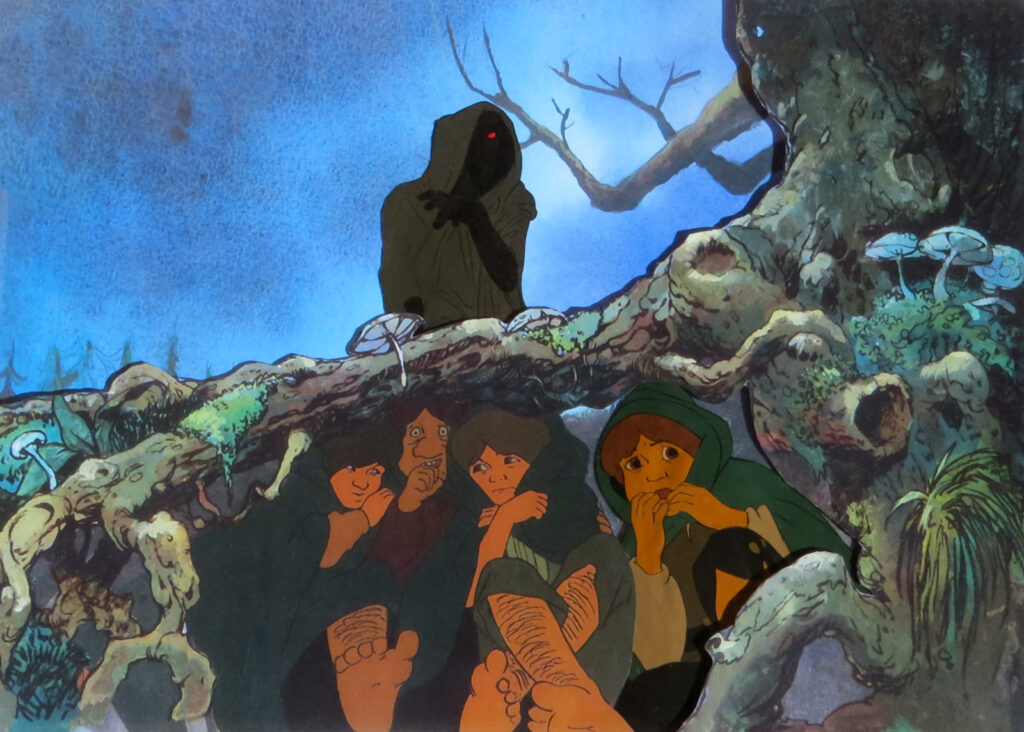
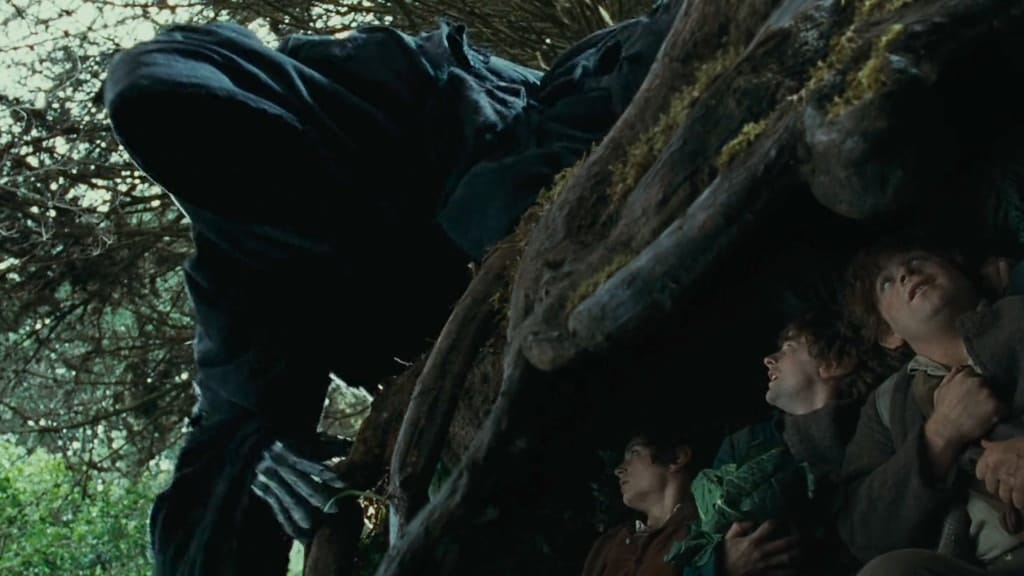
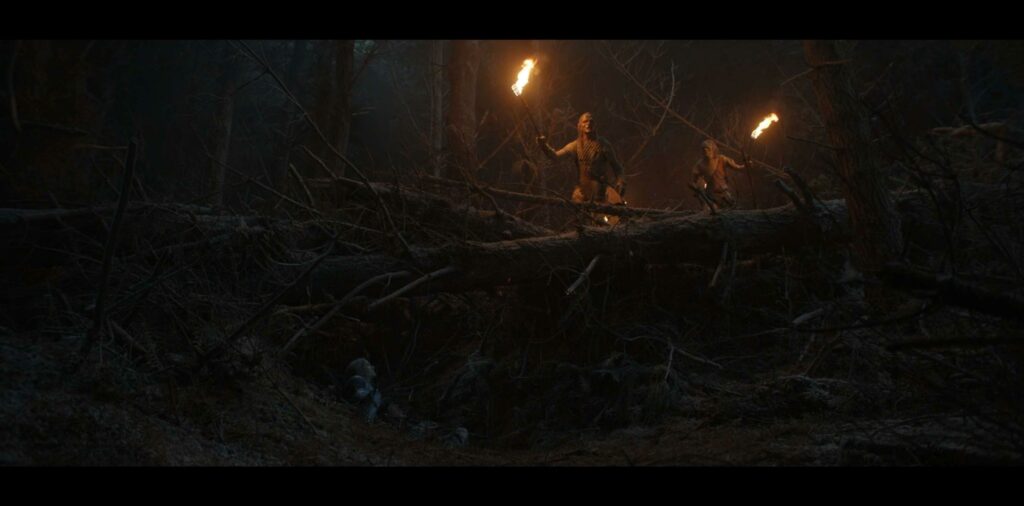
All of us on the ground who’ve made the show, we approached it with love and so many of us are huge fans, and we just want people to live in Middle-earth again, just like we want to live in Middle-earth again.
Alex Diesenhof, director of photography
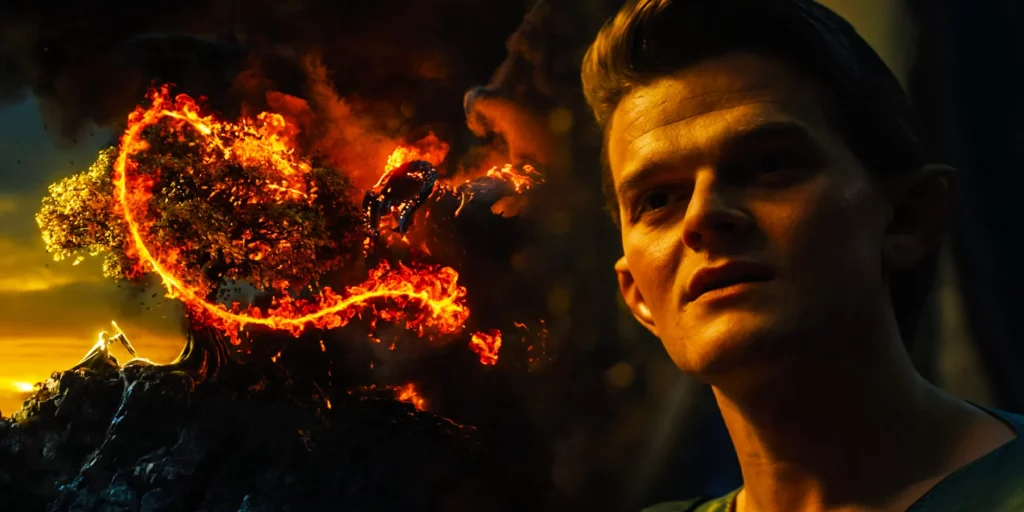
On Mithril and Legends
One of the most controversial ideas put forth in The Rings of Power is the source of Mithril’s magic. Fans worldwide — from the Tolkien Professor, Corey Olsen, to the Tolkien Society, to nearly all lore YouTubers — universally loathed this effort to expand the Legendarium. The Showrunners justify their choice:
“What if there’s a grand unification theory that could connect the light of the Two Trees of Valinor, which went into the Silmarils, to the rings? The three elven rings were at least partially made of mithril… It was a way to connect many parts of the canon, including the elves fading.”
J.D. Payne, co-showrunner
“Mithril is unusual in Middle-earth. It’s Tolkien’s vibranium, or adamantium, or like the one in Avatar, unobtainium. I would trust Elrond’s read on this piece of lore.”
Patrick McKay, co-showrunner
“I think we’re quite used to the elves doing exactly the right thing and knowing exactly what to do. And that’s not necessarily the case here. [Galadriel] knows that if she [reveals Sauron to Celebrimbor], the rings wouldn’t get made. She needs the rings to be made so that the elves can stay in Middle-earth and continue to fight him. But I don’t know whether that’s the right thing to do!” – Morfydd Clark
“She’s gonna get a bit more magical! I’m really looking forward to that. The gift, or curse, of foresight, I found quite interesting.”
Morfydd Clark, on Galadriel getting her ring for Season 2
Screenrant caught up with the boys to talk about those not-yet-Nazgûl witches.
These witches are lesser conjurers than one of the wizards would be, and are bested here, but they escape in another form. While the visual language is a little similar to the Nazgûl, we’re also thinking about Macbeth and we’re thinking about the old crones and the three witches and just trying to come up with something strange and weird. We know they come from Rhûn, and we know there are magic cults in Rhûn, which is one of the things Tolkien writes about. So maybe there’s a slightly different kind of magic and we can peel back the layers in future seasons.
Patrick McKay
J.D. Payne continues that we haven’t seen the last of the three witches, “were they just temporarily vanquished? I think that’s a story point that people can be thinking about… That’s him seeing into the Unseen world. The ring takes you into that place where you can see the true form of things.”
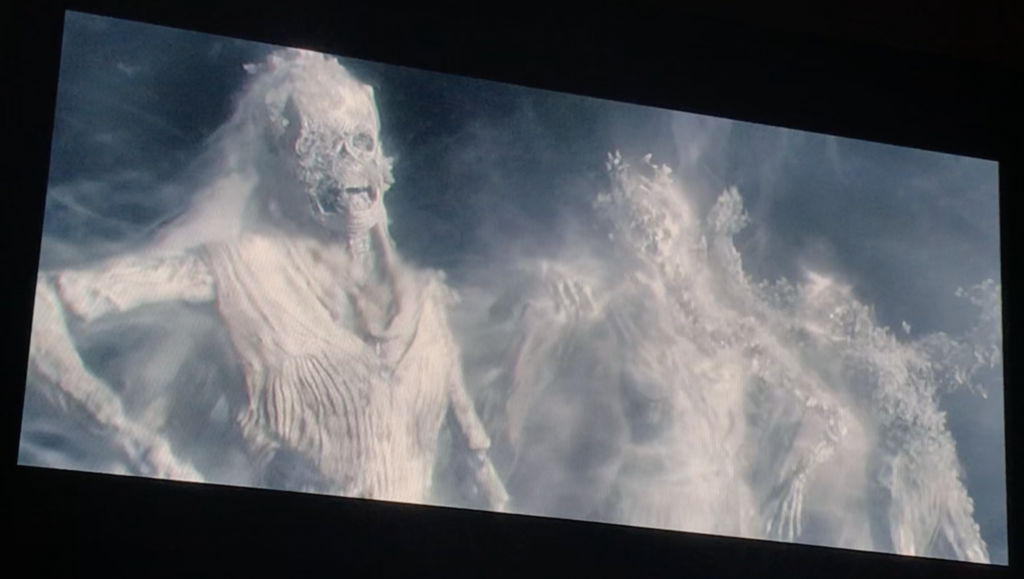
Númenor
The showrunners tell Joanna Robinson at the Ringer podcast that they are shocked nobody has compared the reveal of Elendil to its inspiration from Lawrence of Arabia. In the classic film, considered one of the top 5 films of all time, the shadow scene represents the title character Lawrence adopting his savior-ego complex and leading the Arabs to potential freedom. In Rings of Power season one, Elendil loses his children to politics and war, but will eventually lead some Númenorians to safety and freedom.




Above: Lawrence of Arabia, Rings of Power episode 2
“If you look back over her trajectory this season, it seems like Isildur’s sister has been pulled into the Pharazôn camp, and that could mean big things for Númenor moving forward. Could she touch the Palantir and increase her sympathies toward the faithful, Or take issue with the idea that the queen has been using an Elven artifact and go the other way?” – via Vulture
“There was more about Isildur not wanting to be a sailor. We could do a whole season on that.” J.D. Payne to The Ringer
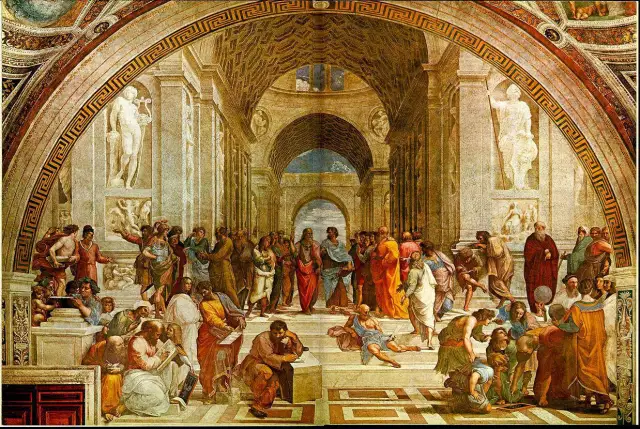
Númenor’s aesthetic is directly based on the classical Raphael portrayal of Athens as seen in the Vatican, McKay tells the Ringer podcast. Tolkien famously based his myth of Númenor on the ancient Grecian stories of Atlantis, made popular by Plato in his Athenian storytelling. In Letter 163 J.R.R. Tolkien admitted, “I have what some might call an Atlantis complex. … I mean the terrible recurrent dream (beginning with memory) of the Great Wave, towering up, and coming in ineluctably over the trees and green fields.”
Responding to Fan Criticism
Hollywood Reporter asked the writers to respond to five constant criticisms of the lore, paraphrased here:
- Dwarf women have beards. “Tolkien has answered this particular question both ways.”
- Elves all have long hair. “If Tolkien ever wrote a comprehensive style guide to hairstyles, I would love to see it.”
- Galadriel is too masculine. “Her nickname [by Tolkien] is “Nerwen,” which means “man-maiden.”
- Costumes are too new. “Guess what? Sometimes clothes are new.”
- Pacing is too slow. “Tolkien will take his time and let you sink into characters, into a journey, and… I hope people will have the patience to settle in for a Tolkien epic.”
“The storytelling will be different next time, not because of the response to the show, but because of the experience of making the show for us. We’re certainly listening to the critics and to our audiences. You don’t want to give any one voice too much weight, but figure out what people are responding to.” – via Vulture
“We felt it was very important that season one be about reintroducing Middle Earth in this new era. Introducing all of these kingdoms, and all of these peoples and all of these characters and knowing what was important to them, and what they had at stake.” – Patrick McKay, who still needs to introduce 16 leaders of men and dwarves to be corrupted by the rings of power.
“People of the world will think everything, love/hate & in between, I’m quite sure, but it certainly seems like everybody’s talking about it and people are watching. I think we always knew there would be a lot of chatter from all corners, and it’s good to be talked about.” – Lindsey Weber
“It’s not a mystery it’s a character journey. Watching fans fight each other bums me out. Sauron enjoy seeing us tear each other part” – J.D. Payne
“Some portion of audience don’t want to go in journey of discovery. That surprised us. We thought fans would enjoy Galadriel not having husband and child.” – Patrick McKay on The Ringer podcast
“The guys really wanted to devise a story that would work from service level the first time and then would work on a whole new level when you saw it again with the full knowledge of the season.” – Lindsey Weber
“What matters to us is if it’s entertaining enough that people are digging into it and debating it. One of the big things we learned was even when it’s a small scene, it always has to tie back into the larger stakes. It has to be about good and evil and the fate of the world or it doesn’t have that epic feeling you want when you’re in Tolkien.” – Patrick McKay
“Bezos is a huge fan of Tolkien and has a great knowledge of the lore. The whole idea of why we got the rights to begin with was to tell the story of good versus evil — of people coming together from all different worlds to fight evil, really. Leaning into light was the other thing that was really appealing to everybody — bringing something to our global customer base that is hopeful and has light and that a family can watch.” – Jennifer Salke, president of Amazon Studios
Good Things Are Worth Taking Time
“We wanted to explore what it meant for Galadriel to, who had been right a lot, to be wrong, really, really wrong for a minute. We wanted her to have to live with those consequences, and in a way that she couldn’t fix in the short term.” – Lindsey Weber, Executive Producer formerly from Bad Robot, on why the volcano wasn’t the triumphant climax of season one.
“JD and Patrick talked about Stalingrad and Battle in the Streets, not sort of full epic but more hand-to-hand and brutal with surprising twists and turns.” – Lindsey Weber
Mystery Boxing The Obvious
When quizzed about the Gandalf-like similarities of The Stranger’s voice and accent Patrick McKay responded: “The specifics of these things matter so much. Daniel Weyman, who plays The Stranger, developed a voice with vocal coach Leith McPherson that has a little twinge of the Irish lilt the Harfoots have. Whatever name he may one day be known as is not actually important at this stage of his journey. What matters at this stage is… his own relationship to power and good and evil and darkness and light.”
“I was playing what was put in front of me. I felt I could really play it honestly.” – Daniel Weyman, who is following his nose to Rhûn, wasn’t told his character’s name at first.
“There’s even references to Gandalf himself possibly coming much earlier in some different form — he ‘walked among the elves’ — there’s a story to be told with a wizard in this age feels in harmony with Tolkien’s canon.” – Showrunners J.D. Payne and Patrick McKay
“Apples have a lot of mythological resonances in cultures really across the world. There’s, obviously a biblical idea. I mean, it’s also commonly associated with the tree of knowledge of good and evil. The taking of fruit in a garden setting is something that portends kind of a loss of innocence, a leaving of Eden and heading into the difficult world. But rather than eat the apple, he holds on to the apple, as you know, holding onto the friendship.” – J.D. Payne
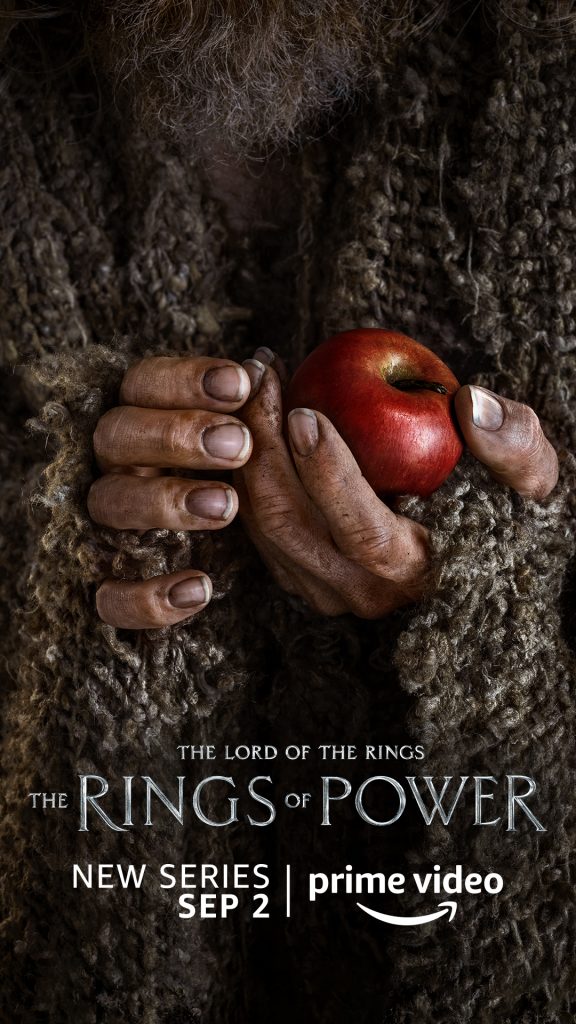
Sticking to the Plan
Lindsey Weber, Rings of Power producer who previously produced Star Wars Episode 9: The Rise of Skywalker, told the Ringer that “their (Patrick and J.D.) passion for and knowledge of Tolkien—combined with their clarity of vision for the whole series, across multiple seasons—was uniquely impressive.”
“We don’t want to make something disposable,” Payne says. “Carrying the responsibility of this material and this man’s life’s work, we aspire to making something that’s special and not like anything else you’ve seen before. … It’s not ours. We have a responsibility to this world and this history and this mythology that this guy created that means so much to these people and want to do right by it.”
J.D. Payne
“I wouldn’t say we’re over-correcting for any of it, but we’re certainly listening to people’s responses.”
Patrick Mckay
McKay tells Vanity Fair in a season-ending interview: “In the fourth episode, she asks him for advice, and he says basically, “the way you beat your enemies is to figure out what they need and figure out how to give it to them. Help them master their fear. And then you can master them.” And that’s exactly what he’s doing to her the entire season — maybe what he’s going to do to everybody over the following seasons. That’s his modus operandi.”
Here’s some reactions from the writers of Season 1 of The Lord of the Rings: The Rings of Power, now streaming all episodes FREE with your existing Prime membership that most people already have for free shipping.
Sources:
- Vulture: The Rings of Power creators explain Sauron’s identity and their plan to explore the edges of Tolkien’s map
- Empire Online: The Lord Of The Rings: The Rings Of Power – Unpacking The Finale’s Secrets (And More) With The Cast And Crew
- Deadline: ‘LOTR: The Rings Of Power’ Season 1 Finale: Showrunners & EP Talk Sauron Twist, Tease “Grittier” Season 2, & New Characters From Tolkien Canon
- The Hollywood Reporter: ‘The Rings of Power’ Showrunners: Sauron Will Be Like Walter White in Season 2
- Variety: Amazon Studios Head Jennifer Salke Breaks Down the $700 Million ‘Rings of Power’ Gamble and Plan for MGM Integration
- The Hollywood Reporter: ‘The Rings of Power’ Showrunners Break Silence on Backlash, Sauron and Season 2
- The Ringer: Amazon’s ‘The Rings of Power’ Was the Streaming Bet of the Year. It Was Also a Bet on an Unlikely Duo.
- Vanity Fair: The Rings of Power Creators Reveal How Sauron Hid in Plain Sight
It’s been a month since the final episode of Season 1 aired. TheOneRing.net staff have had time to reflect, to go back and binge-watch the whole thing, and to process thoughts.
As we begin the journey to Season 2 (which could be a long one!), here are some of TORn staffers’ reactions to the first season of Prime Video‘s The Lord of the Rings: The Rings of Power. As you’ll see, we’re an independent bunch with a wide variety of opinions!
Continue reading “Staff Reaction – ‘The Rings of Power’ Season One”Over the last four weeks, our friends at Weta Workshop have had one of their most stunning pieces up for pre-order. It’s the one piece that fans, like myself, have been asking to have made for the last 20 years. It also works nicely with this character having such a large part in Tolkien’s written lore, as well as The Lord of the Rings: The Rings of Power tv series.
Fans can finally place their orders in, but for only for the next 24 hours, for Elendil. This fantastic piece depicts how we saw Elendil in The Battle of the Last Alliance during Peter Jackson’s prologue sequence in The Lord of the Rings: The Fellowship of the Ring. Elendil is priced at $549 and will be shipping in the second quarter of next year.
As with any open window pre-order, his edition size will be set by the number of orders placed as of tomorrow at 2 pm PDT. So get your order for Elendil in now!
In 1967, Tolkien began writing a letter to his son, Michael, where he shared his perspectives on cultivating faith. Tolkien likened the character of faithfulness (‘loyalty’) to that of a full-grown tree — a living organism that must be tended to by its keepers (Letter 306).
While the reasons for this letter may be forever lost to time, the excerpt reveals a fundamental notion in Tolkien’s mind: The symbolism of great faithfulness with the thriving health of trees.
There is no resemblance between the ‘mustard-seed’ and the full-grown tree. For those living in the days of its branching growth the Tree is the thing, for the history of a living thing is pan of its life, and the history of a divine thing is sacred. The wise may know that it began with a seed, but it is vain to try and dig it up, for it no longer exists, and the virtue and powers that it had now reside in the Tree.
Very good: but in husbandry the authorities, the keepers of the Tree, must look after it, according to such wisdom as they possess, prune it, remove cankers, rid it of parasites, and so forth. […] But they will certainly do harm, if they are obsessed with the desire of going back to the seed or even to the first youth of the plant when it was (as they imagine) pretty and unafflicted by evils.
The other motive […] aggiornamento: bringing up to date: that has its own grave dangers, as has been apparent throughout history.
Letter #306, The Letters of J.R.R. Tolkien
In my previous article, we discussed clues from the trailer and images of Amazon’s The Rings of Power that directly led us to identifying Sauron’s haunting presence on Middle-earth. Here, I will discuss how The Rings of Power might be using trees to illustrate the shrinking faith of the Númenoreans (Men) and the Noldor (Elves).
We begin in the island nation of Númenor. The Númenoreans are Men descended from the line of Elros, brother of Elrond. The line of the Kings of Numenor going back to Lúthien, daughter of the Sindarin King Thingol and Melian the Maiar. Of Lúthien’s descendants, Tolkien writes that ‘her line shall never fail’ (A Knife in the Dark, The Fellowship of the Ring).
In the King’s Court at Armenelos, Númenor’s capital, a white tree blooms: Nimloth the fair (Nimloth is Sindarin for ‘White Blossom’). Descended from a tree made in the likeness of Telperion for the Noldor of Tirion (Galathilion, the’White Tree’ of Yavanna, The Silmarillion), Nimloth was gifted as a seedling by the Eldar of Tol Eressëa in Aman. Her white petals gleam with the setting Sun and her scent fills the air of King’s court. Nimloth is the symbol of friendship between Men and Elves. (Cite.) A sign of the Númenor’s faithfulness to Eru and her Elven heritage.
The Númenoreans retained the dedications and order, but altered the fourth day to Aldëa (Orgaladh) with reference to the White Tree only, of which Nimloth that grew in the King’s Court in Númenóreans [my emphasis] was believed to be a descendant.
Appendix D, The Lord of the Rings
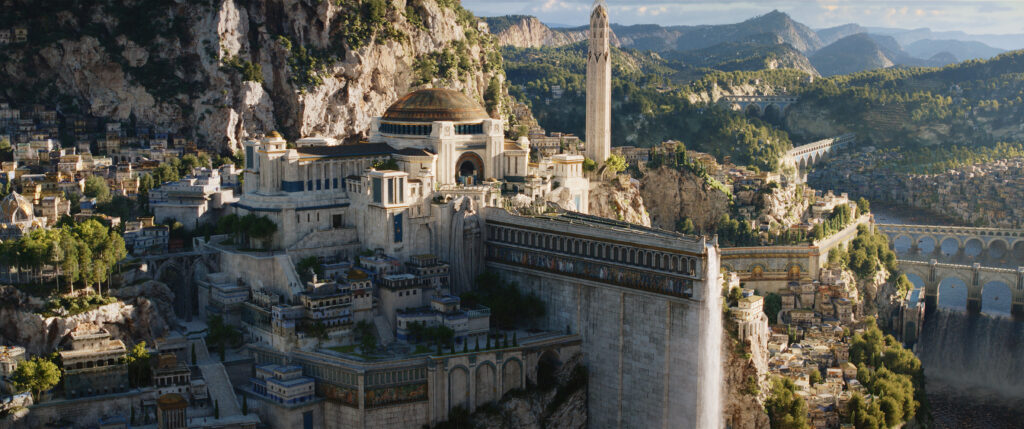
The significance of the blooming white tree is not lost to readers of Tolkien. Soon after arriving in Gondor, Aragorn discovers the sapling borne from the fruit of Nimloth. The discovery astonishes Aragorn, but Gandalf recalls the significance of the sapling:
Verily this is a sapling of the line of Nimloth the fair; and that was a seedling of Galathilion, and that a fruit of Telperion of many names, Eldest of Trees. Who shall say how it comes here in the appointed hour? But this is an ancient hallow, and ere the kings failed or the Tree withered in the court, a fruit must have been set here. For it is said that, though the fruit of the Tree comes seldom to ripeness, yet the life within may then lie sleeping through many long years, and none can foretell the time in which it will awake.
The Steward and the King, The Return of the King
In Gandalf’s words, we see the link between preservation and renewal. The line of Telperion preserved from the days of the Two Trees, and the promise of renewal to its former glory.
But, alas, our first sight of Nimloth in The Rings of Power is a solemn one. Unlike the sapling of Gondor emerging from the snow, we instead witness the opposite, the beginning stages of a fully-grown white tree beginning to wither.
Nimloth is weeping.
Her blossoms scatter onto the royal courts as Queen Regent Míriel and her advisor Pharazôn pause to make note of the moment. Míriel’s face flushes with unmistakable desperation.
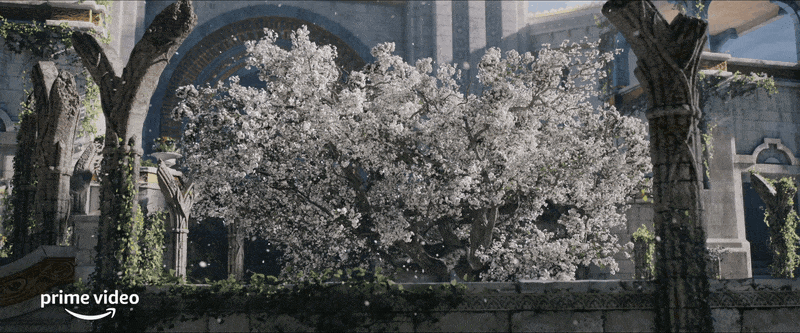
Is this then the first of many signs and warnings of Númenor’s descent to her watery grave? As steward-keeper of Nimloth (Faith), is Míriel’s faith in Eru and Númenor’s alliance with the Elves starting to crumble?
From what we are seeing, Nimloth is shedding her crown; Númenor is dying.
Mortality is, of course, a theme central to Tolkien’s works. Endings are inscribed to the life and stories of every creature on Middle-earth. It is this ill-fate that Tolkien has termed “fading” that the immortal Elves seek to halt. As Tolkien writes of the Second Age in a letter to Milton Waldman:
All through the twilight of the Second Age the Shadow is growing in the East of Middle-earth, spreading its sway more and more over Men — who multiply as the Elves begin to fade.
Letter #131, The Letters of J.R.R. Tolkien
Following the destruction of the Two Trees, their great Elf-king Finwë’s death at the hands of Morgoth, the theft of the Silmarils, and in defiance of Eru and the Valar, the arrival and lingering presence of the Noldor (tribe of Elves descended from Finwë) on Middle-earth resulted in their inevitable decline as a people. Yet, the hubris, ingenuity, and might of the Noldor also meant they were a great force to be reckoned with.
They are the chief artificers of devices (“rings”) that halt fading in the Second and Third Age.
In The Rings of Power, the fading of the Noldor is discreetly translated through the Tolkienian metaphor of suffering trees. Given their presence on Middle-earth is consequential to their continued defiance to the Valar, the Noldor’s faltering faith is represented in their inability to keep their beloved Mallorn trees (plural Mellyrn) from fading.

We are quite familiar with the description of the Mallorn Tree from several Tolkien texts (Letter to Minchin (1956), The Fellowship of The Ring, Unfinished Tales). It is prominently described as having a single smooth bark (“pillar”) of grey silver whose leaves turn to pale gold in the autumn, which carpeted the forest floor through spring and summer.
Its bark was silver and smooth, and its boughs somewhat upswept after the manner of the beech; but it never grew save with a single trunk. Its leaves, like those of the beech but greater, were pale green above and beneath were silver, glistering in the sun; in the autumn they did not fall, but turned to pale gold.
In the spring it bore golden blossom in clusters like a cherry, which bloomed on during the summer; and as soon as the flowers opened the leaves fell, so that through spring and summer a grove of malinorni was carpeted and roofed with gold, but its pillars were of grey silver. Its fruit was a nut with a silver shale.
A Description of the Island of Númenor, Unfinished Tales of Númenor and Middle-earth
Unlike the description of the Mallorn given by Tolkien, we instead witness a dark, crudely shaped, and twisted bark of a large, and what we presume is an ancient Mallorn Tree.
From stills and footage, we can construct a working hypothesis that the Noldor are experimenting with planting a Mellyrn forest in Lindon. As Gil-galad and Elrond commune among the trees at night, our eyes are drawn to the sharp contrast of the younger Mellyrn (right) and the dark, brooding, and ancient Mallorn (left). It appears that the ancient Mallorn is fading, albeit gradually. What may have begun as a silver pillar for a bark has gradually twisted unto itself; stopping the Mallorn from growing to its magnitudinous heights. Her golden leaves also appear to be much darker compared to the younger ones.
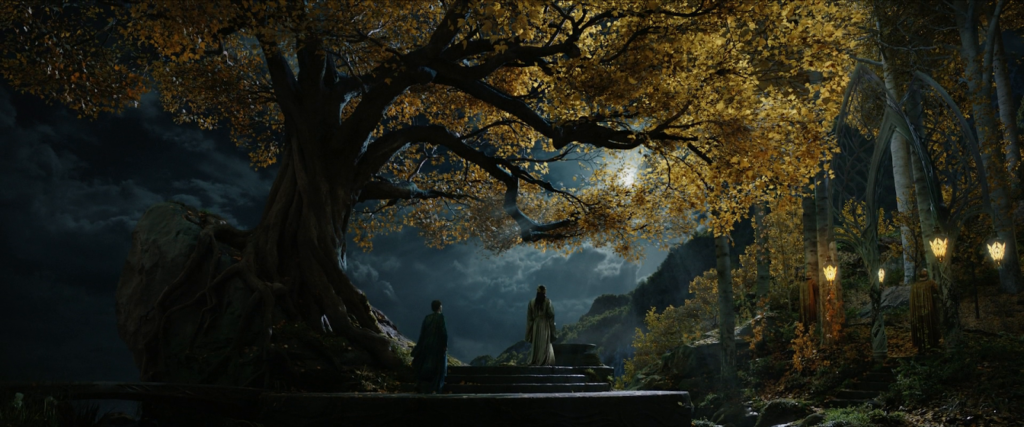
Further evidence for this hypothesis is the telltale presence of a Mallorn sapling in Khazad-dûm. While we cannot confirm why a sapling might be growing in the deep underground caverns of Moria, it is curious that the Elves as keepers of the Mallorn sought the Moria Dwarves as collaborators in testing the possible thriving conditions for Mellyrn.
A simpler explanation might be that the Mallorn sapling was grown from a seed gifted to the Moria Dwarves in lieu of friendship. A possible callback to Galadriel gifting Samwise Gamgee a single Mallorn nut that was consequently planted in the Shire.
Even so, the fading of the Mallorn will be an ongoing leitmotif that will marshal the Noldor into seeking and creating the Rings of Power as a means to halt the Fading of the Elves and their realms.
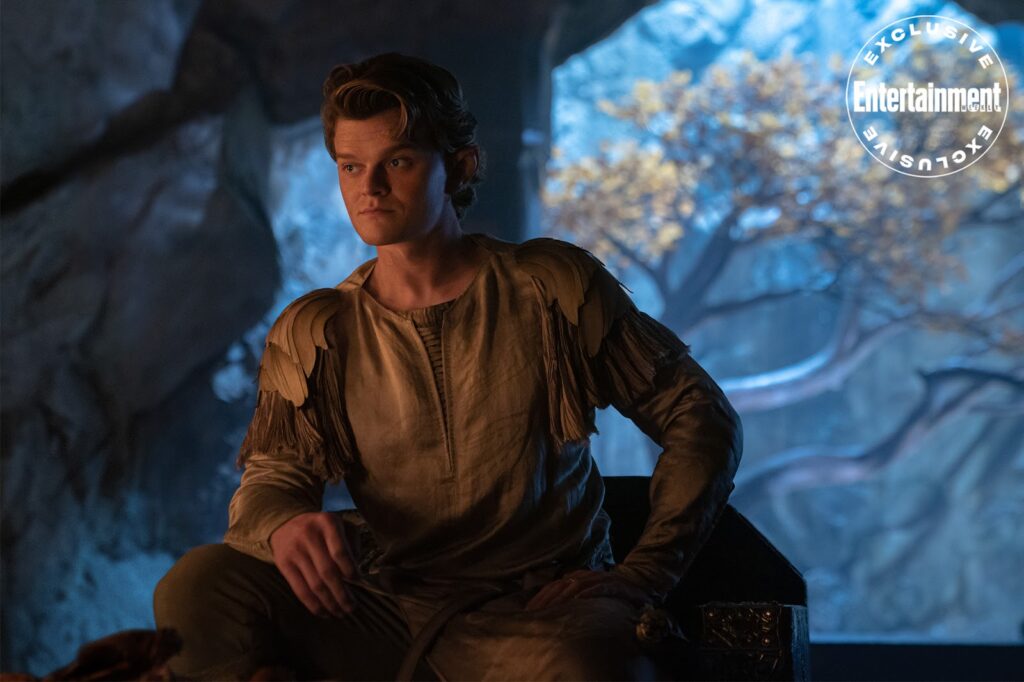
Extra
The Mallorn of Lothlórien.
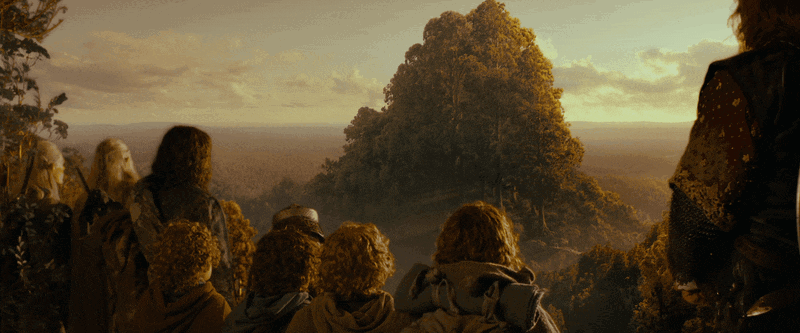
About the author: DrNosy is a scientist (physical science), scholar, and Tolkien enthusiast. Her primary interests lie in review and analysis of The Lord of the Rings: The Rings of Power. She is an active contributor and Reading Room Moderator on TheOneRing.net Discord where she also hosts live open-forum panel discussions on The Rings of Power, The Silmarillion, and a variety of Tolkien-related topics. You can reach her on Twitter.



